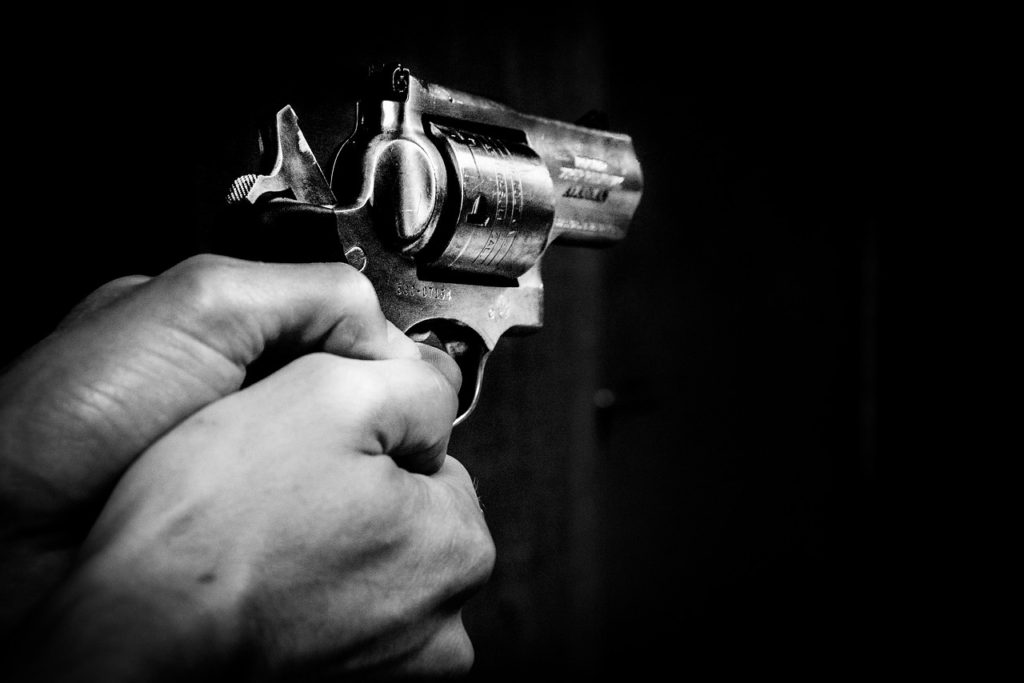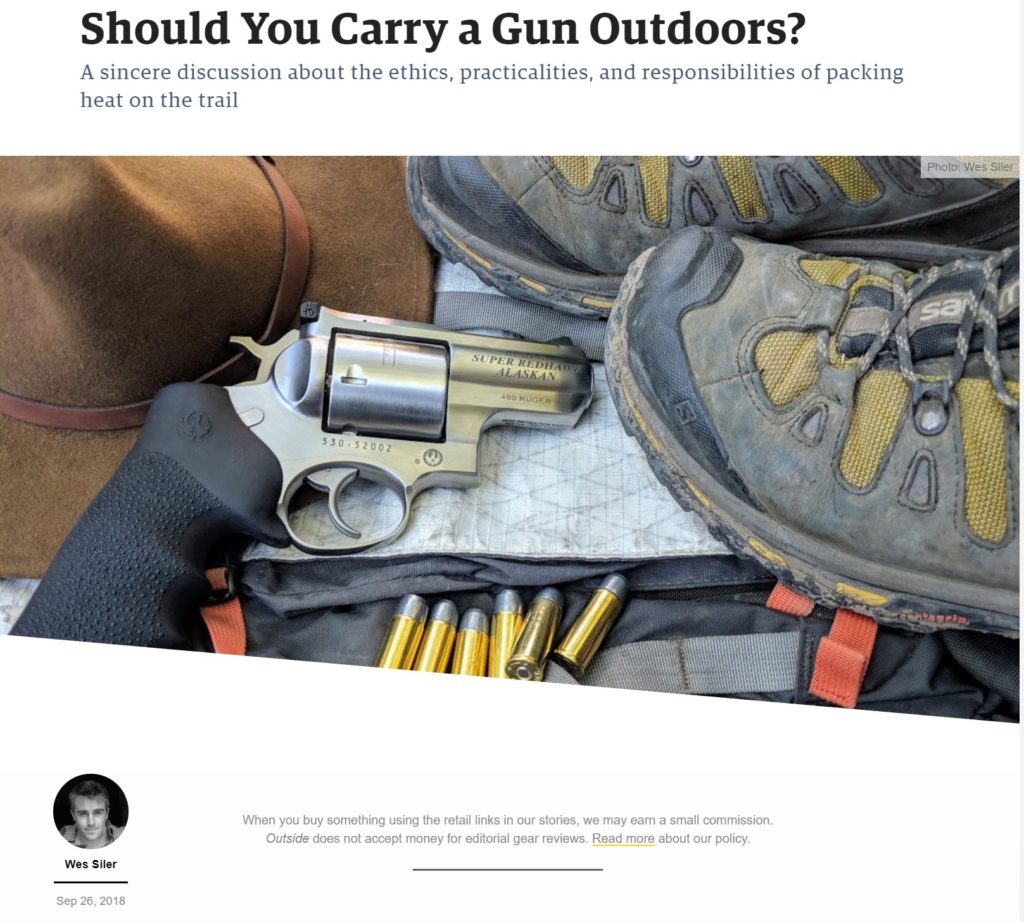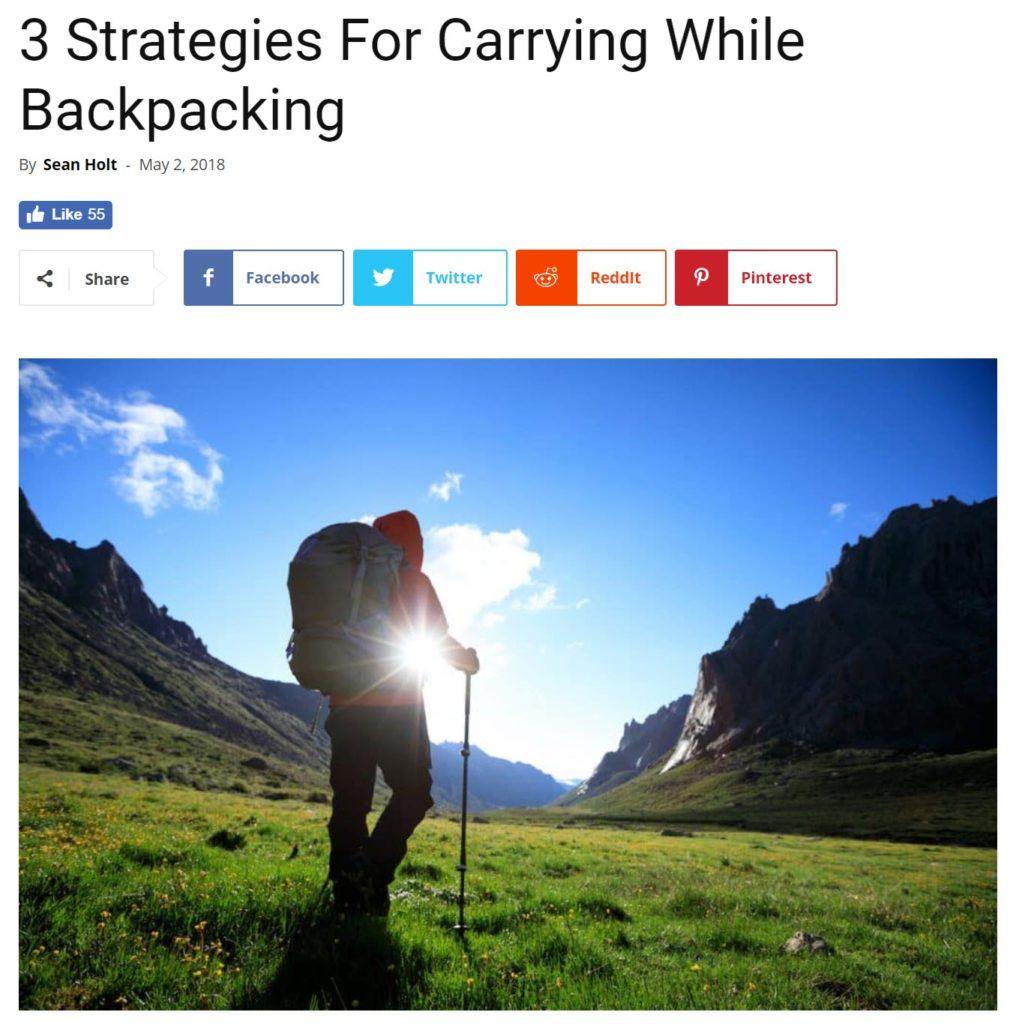
While violent crime outdoors is rare, one of our most common fears is that we’ll encounter a stranger with something nefarious on their mind.
To that end, many people consider carrying a firearm for personal protection.
Rather than telling anyone what they “should” or “shouldn’t” do, remember that whether you choose to carry is entirely up to you.
For some, it’s a hard pass. They aren’t comfortable with it, they don’t like it & they have zero interest in entertaining the thought. And that’s absolutely fine.
Others may not have ruled it out & are still mulling over whether it’s the right option for them.
If you’re one of them, it’s worth considering a number of questions to be sure you’ve drilled down into the details of what it means to carry outdoors before you take the leap.
First things first
Beyond the questions we’ll explore in a moment, the very first step is to make sure you understand all federal, state & local laws, applicable permits, registrations, firearm types, maintenance requirements & safety courses.
I won’t cover those legal issues in detail here, but plan to visit your state’s Attorney General, Division of Safety, or Law Enforcement Agency websites to learn more.
5 Questions to ask yourself before you carry
If you’re considering a firearm for safety in the woods, it pays to explore what that means for you, as well as what it will require of you beyond simply having one in your pack.
With that in mind, here are five questions to ask yourself as you explore whether carrying outdoors is right for you.
1 – Ask yourself “why?”
Before you dive in with both feet, think carefully about why you want to carry. There are no right or wrong answers, but getting a firearm because you think you “should” (or because others think you should) isn’t the best approach.
Carrying a gun is a grand responsibility, and as such, you need to be 100% comfortable with your decision & and its purpose.
Speaking of purpose – why do you feel you need it most? To defend yourself against people? Animals?
The answer to that question will impact the type of weapon you choose, potentially the types of permits you’ll need, how & where you carry, and the type(s) of training you pursue.
So be sure you take time to dissect your fears & “find your why” before you decide to carry.
2 – Where & how will you carry it?
If your goal is protection (vs. hunting), then you’ll need your firearm to remain easily accessible at all times.
Meaning – it can’t sit in your pack.
If an attacker is able to get close to you, they’ll be able to close the gap much faster than you’ll be able to fiddle around trying to find it in your bag. And he isn’t going to wait for you to find it before making his move.
Even if you do have it easily accessible, he may be able to reach you before you can draw, fire it & disable him (more on that later).
And any wild animal that charges you will be on you faster than you can blink – and it’s likely that even if your gun is easily accessible, you still won’t be able to draw it fast enough to stop the attack.
That is, unless you have plenty of notice that the animal is either sick, uneasy, or potentially stalking you. In that case, you may have time to prepare before it charges.
Given that your bag isn’t a realistic option in cases where danger is immediate, you’ll have to consider alternatives.
Manufacturers offer various bands & belts to tuck a firearm, but you’ll have to decide whether you find them comfortable. If so, they’re an easy solution. If not, you’ll either have to get comfortable with them or rethink how or if you want to carry.
And if you prefer to carry in your pack, you’ll need to accept the reality that doing so will only be useful in situations where you have plenty of notice that danger exists, but it will not help you in situations that arise suddenly.
Alternatively, if you want a weapon primarily for your campsite, car, or RV at night, then having it easily accessible on the trails is a lesser point.
A greater point, however, is determining how you’ll store your firearm safely to prevent children & others from accessing it without your knowledge.
3 – How often will you practice?
A gun can be a powerful tool, but it’s only as effective as you are. And if a real-life emergency lands at your feet, you’ll have to rely on keen skills – particularly speed & precision – to hit your target.
But that’s easier said than done. And it won’t happen if you take a simple safety course & tuck your gun away assuming you’re good to go.
Your target won’t be standing still waiting to be hit. Rather, it’s likely to be a chaotic scene, in a landscape with downed material, boulders, roots, water, or other materials that can impede your view and/or your footing.
Can you hit your target under those conditions?
Also – you may be able to shoot while you’re standing, but can you shoot from the ground? While you’re being grabbed?
That said, to be effective at using a firearm for your own safety, you’ll need to practice, practice, practice (and practice some more) to be sure you’ll hit your target with as much accuracy & precision as possible should it ever be necessary.
4 – How will you keep it out of the hands of your attacker?
If you bring a gun to a fight, you have to assume there’s a possibility that it can be taken from you.
- You may not draw quickly enough before an attacker strikes – offering them a chance to grab your weapon before you do.
- You may end up missing your target, or only wounding them, which could allow them to continue their attack until they overpower you & gain control of your weapon.
If you’re strong & well-trained, you may be able to avoid these scenarios. Though remember that even police officers & military personnel have their firearms taken from them when accidents happen or they let their guard down.
Planning ahead is important, because you won’t be able to think on your feet when you’re under stress & possibly injured.
If you plan to carry, make plans ahead of time to learn how to keep your gun out of the hands of your attacker & how to regain control if the worst ever happens & it’s taken from you.
5 – How will you stop them if the gun doesn’t work?
Touching on the importance of point #3 – practice is essential, because you have to be able to hit your target.
Yet even if you do hit them, some people who are altered may not feel pain or they may have a high tolerance for pain if the bullet didn’t hit anything vital (for example, if it went through their shoulder or grazed their arm).
And in the first few moments after being shot, momentum can still keep them moving forward with enough force that they can reach you & do bodily harm, especially if they have a weapon.
And if that happens – then what? If you don’t hit them or if you don’t hit them in the right spot & they still have some fight left in them – what do you do?
If you’re in a position to shoot again, that’s an obvious choice – but what if that’s not an option?
Many people are under the illusion that carrying a firearm guarantees their safety, but it does not.
Exploring additional self-defense maneuvers, including Brazilian jiu jitsu, can help you disengage from or disable your attacker using only your body as leverage when that’s all you have left.
And adding to your personal safety portfolio in these ways will offer you invaluable alternatives should your firearm no longer be a viable option.
Conclusion
While news stories can make it feel as though the woods are teeming with outlaws & blood-thirsty bears, the truth is that outdoor crime & wildlife attacks are very rare.
In fact, when it comes to wild animals, most fatal attacks are caused by bees & wasps – where a firearm won’t do you a bit of good.
But choosing whether or not to carry is entirely up to you.
It is indeed your right, but it also requires that you accept responsibility for the safety of yourself & others around you.
Unlike other forms of defense, a firearm can harm other people if not used properly.
But like other forms of self-defense, it requires that you practice regularly to become proficient so that your reaction becomes automatic.
If you choose to carry, be sure that you’re doing it for yourself & not to appease others.
And if you don’t feel that you have the time, energy, or interest to commit to practicing & staying up-to-date on maintenance, a firearm isn’t right for you. And that’s okay.
But if you’re willing to keep up with maintenance, regular practice, learning a back-up plan & keeping it in safe hands, then choosing to carry is also okay.
There is no right or wrong answer, as long as you follow the plan that’s best for you.
Interested in reading additional takes on this subject?
If you’d like to learn more from others about this topic, click on one of the articles below.
https://www.concealedcarrytoday.com/concealed-carry-while-backpacking/

